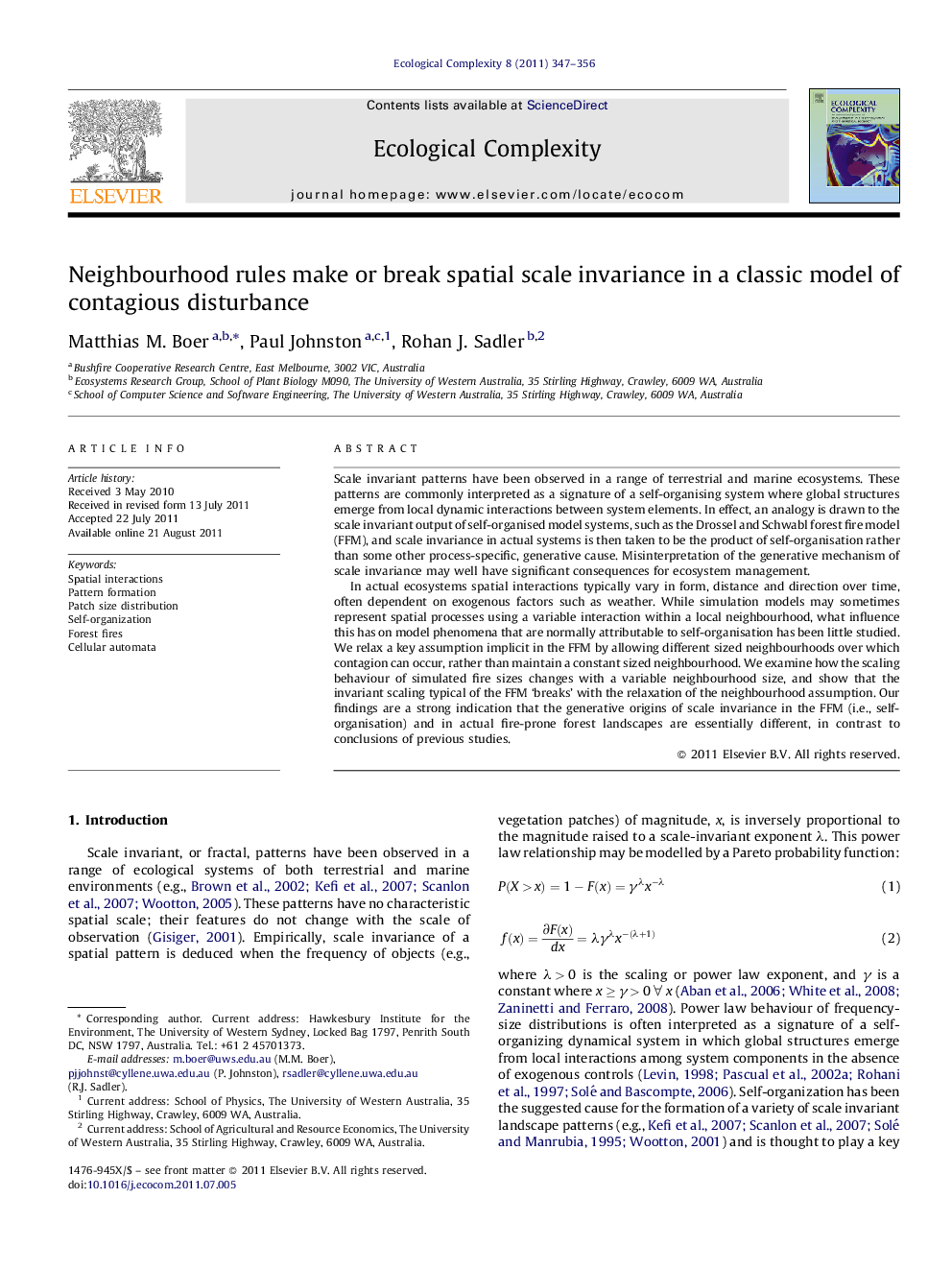| کد مقاله | کد نشریه | سال انتشار | مقاله انگلیسی | نسخه تمام متن |
|---|---|---|---|---|
| 4372614 | 1303067 | 2011 | 10 صفحه PDF | دانلود رایگان |

Scale invariant patterns have been observed in a range of terrestrial and marine ecosystems. These patterns are commonly interpreted as a signature of a self-organising system where global structures emerge from local dynamic interactions between system elements. In effect, an analogy is drawn to the scale invariant output of self-organised model systems, such as the Drossel and Schwabl forest fire model (FFM), and scale invariance in actual systems is then taken to be the product of self-organisation rather than some other process-specific, generative cause. Misinterpretation of the generative mechanism of scale invariance may well have significant consequences for ecosystem management.In actual ecosystems spatial interactions typically vary in form, distance and direction over time, often dependent on exogenous factors such as weather. While simulation models may sometimes represent spatial processes using a variable interaction within a local neighbourhood, what influence this has on model phenomena that are normally attributable to self-organisation has been little studied. We relax a key assumption implicit in the FFM by allowing different sized neighbourhoods over which contagion can occur, rather than maintain a constant sized neighbourhood. We examine how the scaling behaviour of simulated fire sizes changes with a variable neighbourhood size, and show that the invariant scaling typical of the FFM ‘breaks’ with the relaxation of the neighbourhood assumption. Our findings are a strong indication that the generative origins of scale invariance in the FFM (i.e., self-organisation) and in actual fire-prone forest landscapes are essentially different, in contrast to conclusions of previous studies.
► Scale invariant landscape patterns can be a signature of a self-organising system.
► In model versions of these landscapes implications of static neighbourhood geometries have received little attention.
► Here we show that scale-free fire size distributions in a classic forest fire model require a static neighbourhood width.
► Actual forest fire behaviour differs fundamentally from disturbances simulated in the Drossel and Schwabl forest fire model.
Journal: Ecological Complexity - Volume 8, Issue 4, December 2011, Pages 347–356